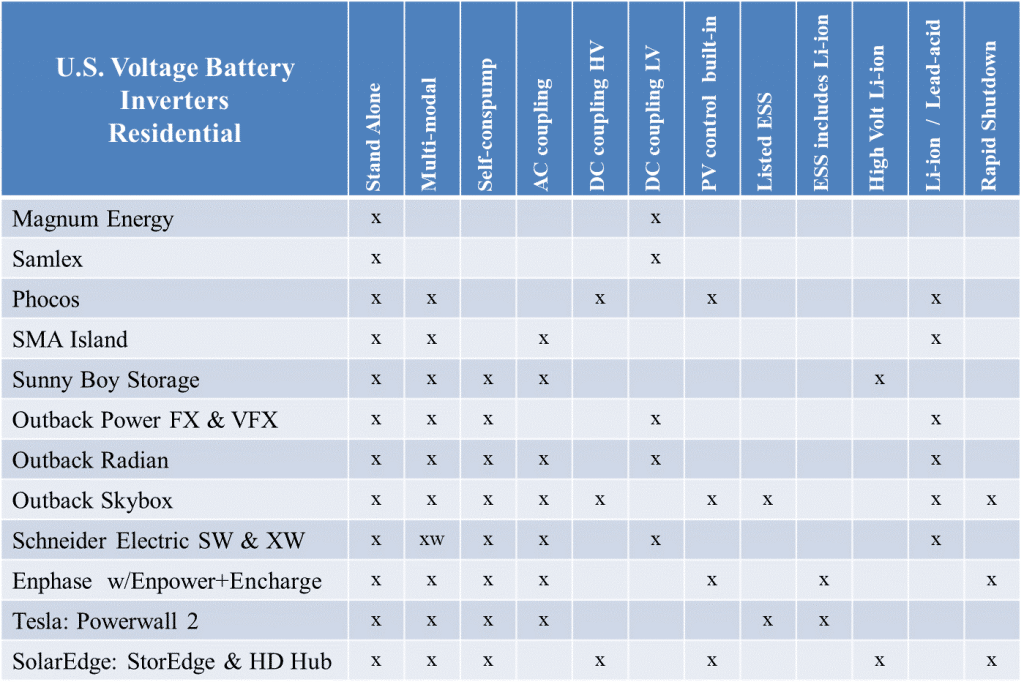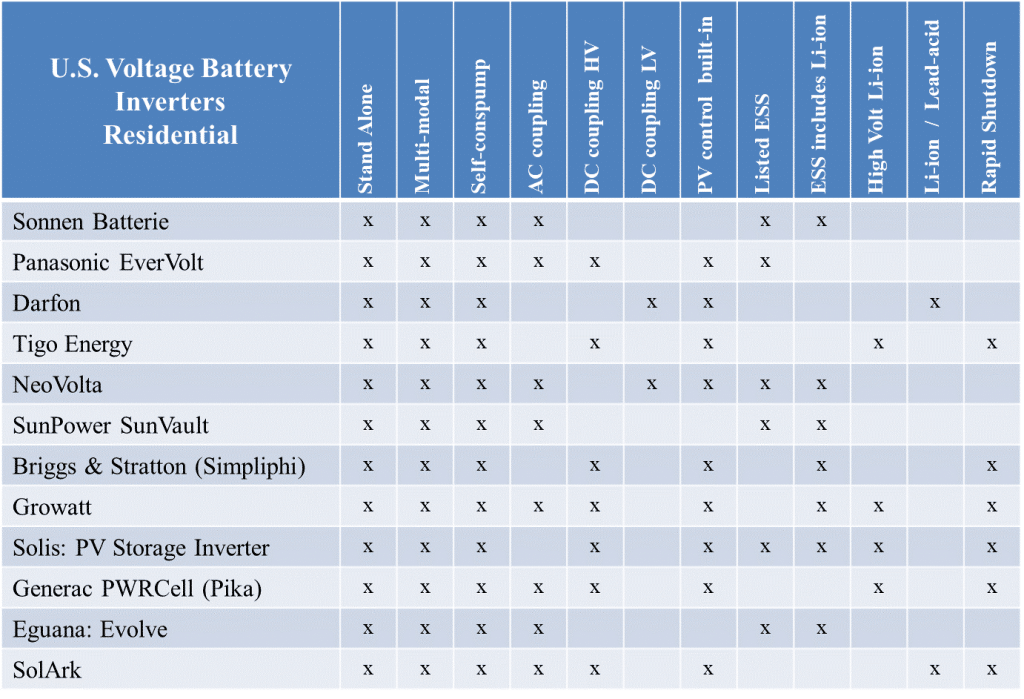The quantity of new products entering the solar storage sector is growing at a fast pace. That can cause confusion with selecting a system; especially since there are many differences in how they are configured and operate. In this article I am going to break them down into categories and key differences to help simplify the process of selecting the best system for your needs.
There are many ways to group the Solar Storage Battery Systems; the grouping I have chosen is not the only way to do so. I have grouped them as follows: (1) Stand-alone systems, (2) Multimodal systems, (3) Smart Multimodal systems.
There are a multitude of battery inverters that fall in to the Stand-alone category.
- Many of them are low-cost single circuit inverters that are DC coupled with a charge controller to manage PV energy into the batteries.
- Several have a large capacity battery inverter that feeds an AC distribution panel with multiple branch circuits. These are designed to support a small cabin, backup power to a grid connected home, a large boat or a motor home. Most of these systems are DC coupled with a charge controller managing the PV energy into the batteries. One or two of these models can also be AC coupled to an interactive inverter. These larger inverters can be connected to the grid and/or a generator for load support; they are not able to sell excess energy into the grid.
Multimodal systems are similar to large capacity battery inverters plus they designed and listed to sell excess energy into the grid. These systems often have a controller where all to the system settings are adjusted depending on the capacity of the inverter(s), the battery bank and the battery charging parameters.
- The standard model uses DC coupled charge controllers to manage the PV energy into the batteries.
- Most of these inverters can be programed to control battery charge through AC coupling of an interactive inverter.
Smart multimodal systems are the fastest growing category of Solar Storage Battery Systems. These smart systems have a controller that monitors solar production and energy consumption. The controller will control energy flow from all sources. It is possible to operate in self-consumption mode or another energy management mode. These controller/inverters are usually listed to comply with California’s CA Rule 21 and Hawaii’s HI Rule 14H; with these modes the controller/inverter can communicate with the utility to enhance grid performance. It is important to know the differences each manufacturer offers.
- They differ in that some can only be DC coupled, others can only be AC coupled, and a few can be either DC or AC coupled.
- Some of the ones with DC coupling also provide GFDI, AFCI and Rapid Shutdown for rooftop installations. Other do not provide these National Electrical Codd requirements. These NEC compliances are usually met with AC coupled systems since an interactive inverter is present and is usually equipped with these NEC requirements.
- Battery options are often limited especially if the systems is a UL listed Energy Storage Systems (ESS). If the system controller requires a high voltage Lithium battery, there are only a few to pick from. System that are designed for low voltage (48 nominal) usually allow for any lithium or lead-acid battery. If it is an AC coupling only ESS, lead-acid batteries most likely will not be allowed.
With smart multimodal systems, it is important to consider all of the above-mentioned differences. My favorite system is one that offers the most options for connecting solar PV and for energy storage. The charts below show the key differences of several brands.


Kelly Provence
Solairgen
www.solairgen.com
